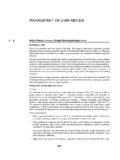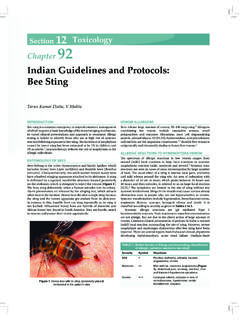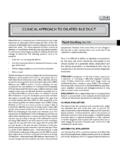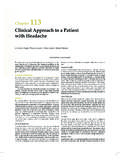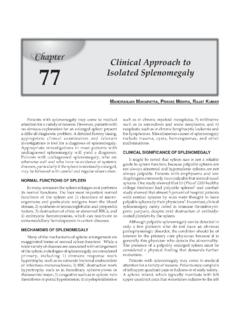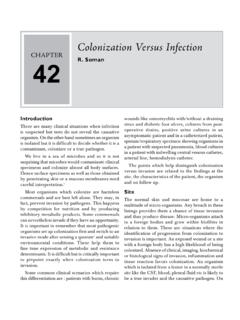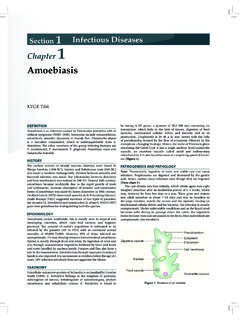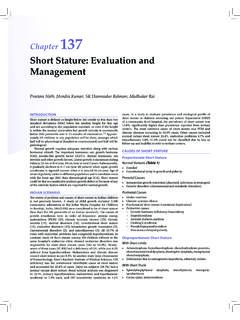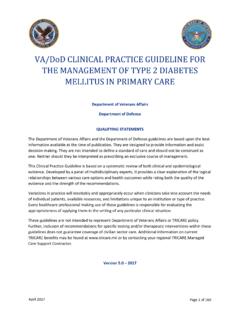Transcription of Chapter 35
1 Chapter 35. Guidelines on inpatient management of hyperglycemia Sukhminderjit Singh Bajwa, Manash P Baruah, Sanjay Kalra, Mukul Chandra Kapoor ABSTRACT GUIDELINES FOR GLYCEMIC CONTROL. hyperglycemia can have detrimental effects in both medical Hospitalized diabetic patients pose numerous clinical challenges. Sociobehavioral, economic, nutritional, racial, ethnic and other factors and surgical hospitalized So far as the management make it difficult for application of hitherto published western guidelines of hyperglycemia is concerned, the hospitalized patients can be in India. The present Chapter is an effort to bring forth the various categorized into two broad categories: (1) non-critically ill, and (2).
2 Clinical challenges encountered during management of different critically ill. diabetic hospitalized populations and to formulate a set of patient and physician friendly guidelines to control hyperglycemia in such patients. Non-critically Ill Patients Keywords: Diabetes; hyperglycemia ; inpatients; insulin therapy; insulin analogs Compared to ICU patients, non-critical patients are less likely to receive adequate attention for hyperglycemia per se. Physicians'. concerns for the management of primary pathology, lack of proper monitoring facility and dedicated paramedical staff in general wards, INTRODUCTION. unsupervised dietary intake and fear of inducing hypoglycemia are Prolonged hospitalization and poorer outcome is a common amongst the factors responsible.
3 These factors are also responsible phenomenon amongst patients with diabetes mellitus (DM).1-3 for avoidance/delay in usage of insulin even in inpatients. There are inconsistent data regarding outcome of intensive control of hyperglycemia may lead to longer hospitalization, impaired wound hyperglycemia amongst hospitalized ,5 Such inconsistencies healing, and occasional risk of polyneuropathy, higher incidence of create doubts regarding the adoption of precise therapeutic systemic infections, urinary tract infections, acute renal failure and interventions in indoor patients with hyperglycemia . increased cardiac ,11. A large number of DM cases are diagnosed for the first time when The targets proposed by American Diabetic Association (ADA).
4 They get admitted for various indications, which may or may not be for premeal blood glucose (BG) (< 140 mg/dL) and casual (random). related to DM. Although Indian data reveal that every sixth patient BG (< 180 mg/dL) are generally acceptable. Target can be lower than admitted to hospital has diabetes, in reality the number may be this threshold in the following situations: (1) stable patients with optimal glycemic control prior to admission, (2) postoperative ward and gestational DM patients in a background of available adequately NEED FOR INDIAN/ASIAN GUIDELINES trained staff for monitoring and treating ,13 Patients Although a number of guidelines on inpatient hyperglycemia who are able to eat adequately at regular intervals are right candidates management have been published, they are not without for subcutaneous (SC) insulin, because intravenous (IV) insulin confounding biases involving nutritional status, level of awareness, regimen is less flexible.
5 Sociobehavioral, cultural and economic factors. Moreover, racial, Sliding scale insulin (SSI), although quite popular, has been found ethnic and genetic differences in insulin resistance and glucose and to be inferior to basal bolus (BB) regimen using rapid-acting analog lipid metabolism may limit the extrapolation of western guidelines to fulfill prandial requirement and once daily long-acting analog to to an Indian There is an acute need for formulation fulfill the basal and supplemental need. Apart from achieving better of user-friendly guidelines relevant in India and other developing nations as well. TABLE 1 Criteria for grading and rating recommendations8.
6 The guidelines delineated in this Chapter are based upon Strength of A Strongly recommended evidences derived from available literature. Initial core writing recommendation group consisted of the authors of this article. Review of the draft and grading of recommendations were done by a panel of experts B Recommended consisting of four endocrinologists, one internist, one pediatrician C Unresolved issue and one obstetrician, each having at least a decade of experience. Grading was based on a method suggested by Frid et al. (2010),8 Scale of scientific 1 At least one randomized controlled study support which includes an ABC scale of recommendation and 123 scale for supporting scientific evidence (Table 1).
7 For each recommendation, 2 At least one nonrandomized or the postfixed capital letter in bold indicates how much weight a noncontrolled or epidemiologic study recommendation should carry in daily practice, while the number 3 Consensus expert opinion based on defines its degree of support in medical literature. extensive patient experience Section 5 Chapter 35 Guidelines on inpatient management of hyperglycemia BG control, the incidence of various infections, respiratory failure TABLE 3 Suggested protocol for insulin infusion in ICU. and acute renal failure is much lower in patients treated with insulin Similarly, basal insulin analogs imparts better glycemic A.
8 Preparation 50 units of regular insulin dissolved in 50 mL. normal saline (NS) in a 50 mL disposable control in diabetic patients receiving enteral nutrition as compared syringe to B. Mode of IV infusion with an electronic syringe pump/. Recommendations administration infusion pumps Premeal BG target should be 110 130 mg/dL, and postmeal target C. Primary target To maintain blood sugar level within a should be 140 180 mg/dL. Targets should be less stringent for the predefined target 140 mg/dL. elderly and patients with significant medical comorbidity. Non- D. Control Blood sugar to be controlled gradually in case critically ill inpatients on enteral nutrition should be preferably methodology of severe hyperglycemia by titrating the dose managed with insulin [A1].
9 Of IV insulin Basal insulin to cover the basal and correctional need, and E. Pre-requisites Initially 15 20 mL of solution should be prandial rapid-acting insulin to cover the nutritional need are flushed through plastic tubing to saturate the preferred choice. SSI is not recommended [A1]. insulin binding sites in the tubing Insulin analogs should be preferred in indoor patients as they are F. Targets Dose should be adjusted as per the levels of associated with less hypoglycemia, better therapeutic outcomes, blood sugar and are more flexible to use [A2]. G. Monitoring Either by capillary blood glucose or from the venous site/central line Critically Ill Patients Glycemic control in critically ill patients is a unique challenge for TABLE 4 Titration of insulin dose according to blood glucose both intensivist and endocrinologist, as these patients invariably (BG) levels have multiorgan dysfunction.
10 In spite of extensive data indicating Blood glucose Dosage of insulin infusion a relation between uncontrolled hyperglycemia and poor outcome levels (mg/dL). in critically ill, optimal glycemic targets are not precisely defined. While evidence favors a tighter control in the range of 110 140 mg/ < 100 No insulin to be given dL in surgical patients, a less aggressive target may suit medically ill 100 149 1 units/hour ,16 Such stringent targets can lead to severe hypoglycemia (< 150 199 2 units/hour 40 mg/dL), which is a cause of increase mortality in the critically ill. A goal range of 140 180 mg/dL has been recently recommended and 200 249 units/hour has been approved by most, if not ,16 250 299 3 units/hour The only acceptable modality of treatment is continuous IV 300 349 units/hour insulin infusion, which should be initiated when BG levels are greater than 180 mg/dL (Tables 2 to 4).
